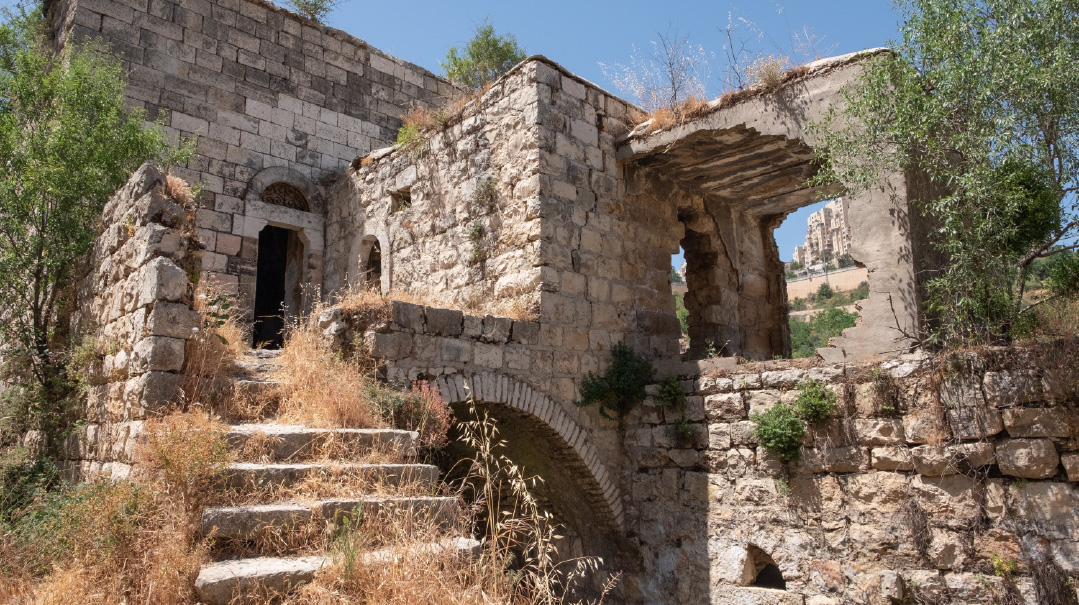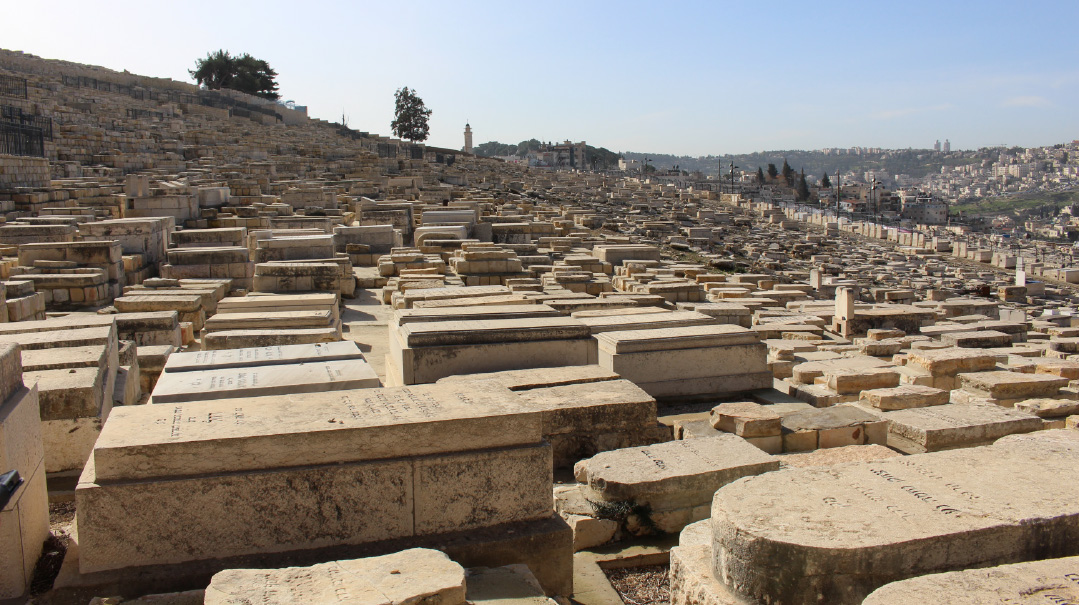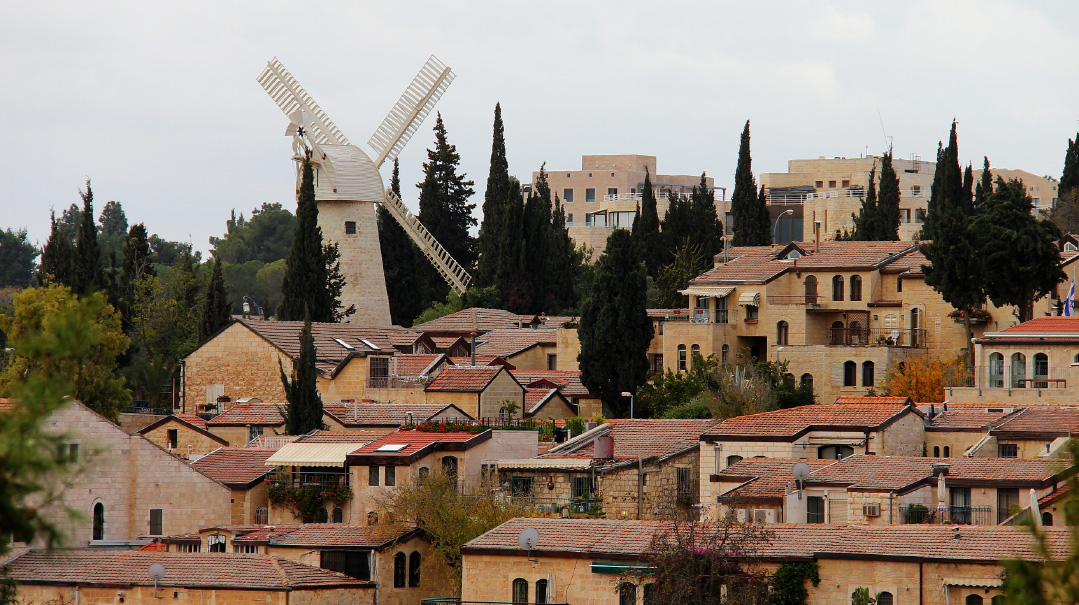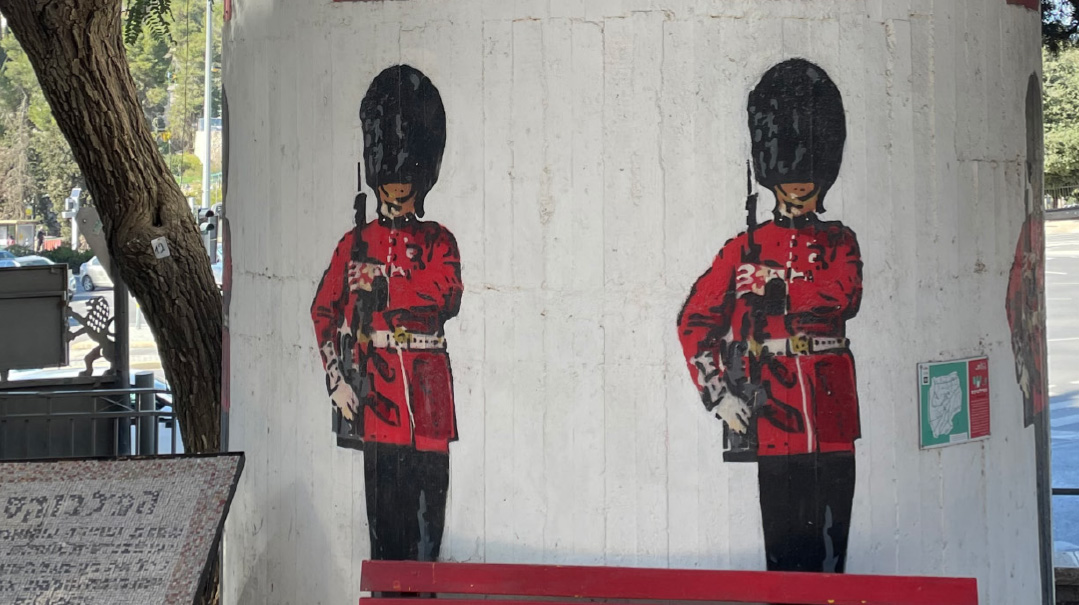Hidden Jerusalem Gems

The holiest city in the world is full of historical surprises in the most random places

The City of Gold is a treasure trove of historical places just waiting to be discovered. The Kosel, Meah Shearim, and the Machaneh Yehudah shuk are all famous Yerushalayim landmarks that are on every tourist’s sightseeing list. But there are plenty of places that the average tourist — and even many locals — never think to visit.
Join me as we discover Yerushalayim’s hidden gems that are off the beaten track.
Lifta
There’s nothing quite like driving up the winding road that leads to the northern entrance of Yerushalayim to give you that feeling of coming home. But don’t let the famous Chords Bridge steal all your attention. Nestled in the valley just below the highway is an ancient settlement. If you’re on the highway and look closely, you just might catch a glimpse of the ruins.
People have lived in Lifta at least since the time of Dovid Hamelech. Many historians believe that Lifta is actually the same place as Mei Niftoach. Mei Niftoach is mentioned in the Torah, and it was a spring that acted as the border between Shevet Yehudah and Shevet Binyamin. That spring still exists today! It’s a popular swimming spot for locals. There’s also a water tunnel that kids love to explore.
Archeologists have found items from the time of Dovid Hamelech, as well as the courtyard of a home that existed during the Crusader period in the 12th century. Over the centuries, the population of Lifta grew in size. The ruins that you can see today were houses that were built in the 16th century, during the Ottoman era.
So, who lived in Lifta? For centuries, Lifta was a Muslim village. The villagers built homes and planted orchards on the steep hillside. There were all sorts of fruit trees, including olive, fig, pomegranate, citrus, almond, and apricot trees. If you hike down to Lifta around Succos time, the sweet smell of ripe figs from the dozens of fig trees will be overpowering. You might see some pomegranate trees, too.
By the 1920s, some Jewish families had moved into Lifta, but they were a very small minority. Still, it seems like the Muslim and Jewish neighbors got on quite well with each other. There was a wine press, some olive presses, and a few businesses like a barbershop, a coffeehouse, a butcher, and even a clinic.
During the War of Independence in 1948, fighting broke out between the Muslim villagers and Jewish soldiers. Eventually, the Arabs left the village. Of the 410 original homes, only 60 still remain.
Soon after the Arabs left, Jewish refugees arrived in Israel from Yemen and Kurdistan. The new Israeli government (Israel became an official state in 1948) settled the refugees in Lifta. It wasn’t exactly the most comfortable place to live. The housing was primitive — there was no running water or electricity. The roads weren’t paved, and it was difficult to get around. By the 1970s, most of the refugee families had moved out.
Today, almost all the houses have been abandoned, though you might spot a couple that are still lived in.

Ammunition Hill
Did you know that the British once controlled Eretz Yisrael? (See sidebar for more details.) The city is still dotted with evidence of the thousands of British soldiers who once roamed its streets.
The largest piece of evidence is Ammunition Hill, which is right next to the neighborhoods of Ramat Eshkol and Maalot Dafna.
Today, the site of Ammunition Hill is basically one big museum, and it is also a national memorial. A major battle was fought there in the Six Day War of 1967. Israel was able to defeat the Jordanians who had controlled the site, and Ammunition Hill has been in Israeli hands ever since.
Ammunition Hill was built by the British in the 1930s. The British had a police academy nearby and needed somewhere to store their ammunition. The hill provided the perfect cover. At the top of the hill, they built a bunker to store the ammunition. Then they built a series of winding trenches that went all the way down the hill. The trenches made it nearly impossible for an enemy to reach the bunker.
When the British Mandate ended in 1948, the Jordanians took control of Ammunition Hill. This was bad news for the Israelis. The Hill is in a very strategic location, lying between Mount Scopus and the Jewish neighborhoods in East Jerusalem. Mount Scopus is home to the Hebrew University and Hadassa Medical Center, so being cut off from that was super inconvenient. In fact, the medical center had to close.
When war broke out in 1967, the IDF decided to take Ammunition Hill. The trenches on the slope made things very complicated, and 36 soldiers lost their lives in the battle.
Nowadays, Israelis from across the country come to visit Ammunition Hill to learn about the Six Day War.
What do the British have to do with anything?
Why does an article about Yerushalayim make so much mention of the British? You’ll have to bear with me for a small history lesson.
Eretz Yisrael has been ruled by many different empires over the millennia. The Ottomans ruled Eretz Yisrael from 1516-1917. They lost control over the country because they happened to be on the losing side of World War I. After the war ended in 1918, all the victorious countries received parts of the former Ottoman Empire. These territories were called “mandates.” Britain were given Eretz Yisrael and controlled the country until the mandate ended in 1948. It was the British who named Eretz Yisrael “Palestine.”

Life and Death
Yerushalayim has two very famous cemeteries — Har Hazeisim and Har Hamenuchos. But there are also several more around the city.
Har Hazeisim has been the city’s burial grounds for thousands of years. Until 1948, it was the only Jewish cemetery in Yerushalayim. During the War of Independence in 1948, the area of Har Hazeisim was cut off from the rest of the city and it became too dangerous to go there.
With Har Hazeisim no longer an option, a new cemetery was established in the neighborhood of Sanhedria. That worked for a few months, until that neighborhood became the new front line. When funerals came under attack from snipers, two more cemeteries were opened. One was behind the Shaare Zedek hospital building on Rechov Yaffo. (This was the hospital’s original building; the hospital has since moved to a much larger premises in Bayit Vegan.) The cemetery is tiny, but some important people are buried there. The most famous is the first Dushinsky Rebbe, who was niftar in the hospital in 1948. Rav Yechiel Michel Schlesinger zt”l, who co-founded the famous Kol Torah Yeshiva, is buried there, too. Dr. Moshe Wallach, who founded Shaare Zedek Hospital, is buried next to the Dushinsky Rebbe. (The sidebar will tell you all about Dr. Wallach and Shaare Zedek.)
Another cemetery was established on the grounds of a former Arab village called Sheikh Badr. Today, that area is within the city itself. It’s located between Gan Sacher Park and the Supreme Court building. The Sheikh Badr cemetery (called Givat Ram cemetery today) was intended to be temporary, and all the graves were supposed to be relocated after the war was over, but many graves remain.
The cemetery is no longer used for burials, but it’s still a busy place. Most visitors come to daven at the kever of Rav Gedalia Moshe Goldman zt”l, the Zvhiller Rebbe. There is a segulah to daven there on Monday-Thursday-Monday consecutively, and many people have seen yeshuos.

Windmill
The Montefiore windmill is a famous part of the Yerushalayim skyline. It was built by Sir Moses Montefiore, a wealthy Jewish banker from England, in 1857. It’s right next to the building of Mishkenot Shaananim, which was also built by Montefiore. Mishkenot Shaananim was one of the first buildings to be built outside of the Old City walls. It was an affordable housing option for the people of Yerushalayim. (Today, it’s part of the Yemin Moshe neighborhood, which was established after Montefiore’s death.)
The people of Yerushalayim were very poor. They relied on donations from Jews in chutz l’Aretz. By building them a flour mill, Montefiore hoped that the people would be able to produce their own bread and sell some flour, which would make things a bit easier for them.
The flour mill only functioned for about 19 years. It didn’t work very well, mainly because it wasn’t built on high enough ground and didn’t get enough wind. But it still stands as a symbol of the love that Sir Moses Montefiore had for Eretz Yisrael and its people.
In 1948, before the British Mandate ended, Jewish soldiers set up a command post on the windmill’s roof. The British High Commissioner (the person in charge of the British Mandate of Palestine) ordered his soldiers to blow it up. What he didn’t realize was that the soldiers he had picked for this mission were all from Ramsgate, the same English town where Sir Moses Montefiore was from. The soldiers saw a plaque on the windmill that explained how Sir Montefiore had shipped over parts of the windmill from Ramsgate. They refused to blow up the entire windmill and only destroyed the outpost on the roof.
Did you know that there’s another flour mill in Yerushalayim? This one is tucked away on a street in the neighborhood of Rechavia, where it almost blends in with the surrounding buildings. The Rechavia Windmill was built by the Greek Orthodox Church in the mid-1800s, around the same time as Montefiore’s windmill. Back then, the area was all farmland. By the 1960s, Rechavia had been completely built up and the windmill hadn’t been used for ages. The government decided to tear it down. But the locals raised such an uproar that it was turned into a small mall instead.

Wallach’s Hospital
Towards the end o f Rechov Yaffo, near the Central Bus Station, is a beautiful old building that currently houses offices. This is the old Shaare Zedek Hospital building.
Shaare Zedek was founded by Dr. Moshe Wallach in 1902. Dr Wallach was a frum German Jew who moved to Eretz Yisrael and opened a pharmacy and clinic in the Old City. He also worked at Bikur Cholim Hospital. But he decided that Yerushalayim needed a larger hospital, so he built one.
Dr Wallach was renowned for doing everything he could for his patients. During World War I, there was a severe milk shortage in the city. Dr Wallach bought a few cows and built a cowshed in the field behind the hospital so he could provide poor people with milk. That field was also used to grow wheat for shmurah matzos for Pesach. On Succos, the hospital courtyard boasted a huge succah where patients could eat and sleep.
Dr. Wallach refused to speak Hebrew. Since it is the language of the Torah, he didn’t want to debase it by using it for everyday speech. He spoke and wrote only in German and Yiddish. When the Nazis came to power, he switched from writing in German to writing in Rashi script.
You can’t talk about Shaare Zedek without mentioning Schwester Selma, who is just as famous as Dr. Wallach. Schwester Selma was also a German Jew, and she became the hospital’s head nurse. (Schwester is “sister” in German, and that is what nurses were called.) She basically ran the hospital alongside Dr. Wallach, and was in charge of everything — from training new nurses to overseeing the kashrus in the kitchen. She was less than 5 feet tall, but don’t let her short height fool you. She was a force of nature, and regularly worked for 18 hours straight. She even lived in the hospital, so she could be on top of things at all times.

Pillbox
ON an intersection near Rechavia is a tall round structure with a pointed roof. It’s white and has British guards painted on the outer walls. It’s quite a bizarre sight for a typical Jerusalem street. What on earth is it?
This is yet another reminder of the city’s British past. This is a pillbox, or guard post, that dates back to the British Mandate. If you look carefully at the structure, you’ll notice small windows toward the top. During the Mandate era, British soldiers were posted here to keep watch. They pointed their rifles through the windows. But why here of all places? Well, this particular spot overlooked the boundary between Jewish and Arab neighborhoods. The British soldiers were meant to prevent any fighting between locals.
There are still pillboxes all over Israel, most of them near major roads or bridges. With the British long gone, they’re obviously not in use anymore, so they just stand there looking pretty.
It’s no wonder that the holiest city in the world is full of historical surprises in the most random places. Which Jerusalem gem will you bump into on your next visit?
Many thanks to Yehuda Geberer for his help with this article.
(Originally featured in Mishpacha Jr., Issue 942)
Oops! We could not locate your form.






